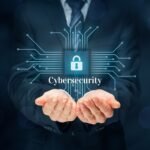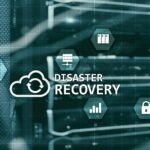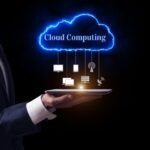Table of Contents
The Internet of Things (IoT) is revolutionizing industries, and healthcare is no exception. IoT innovations are creating waves in the medical field, making healthcare more efficient, accessible, and personalized. Let’s dive into seven powerful IoT innovations that are transforming healthcare as we know it.
Revolutionizing Patient Monitoring
Remote Patient Monitoring Systems
Benefits of Remote Monitoring
Remote patient monitoring systems are a game-changer, especially for chronic disease management and postoperative care. These systems allow healthcare providers to track patients’ health data in real-time, reducing the need for frequent hospital visits. This technology not only eases the burden on healthcare facilities but also enhances patient convenience and comfort.
Examples of Remote Monitoring Devices
Devices such as blood pressure monitors, glucose meters, and pulse oximeters connect to apps and platforms, providing continuous health data. These devices alert healthcare providers to any anomalies, ensuring timely intervention and improved patient outcomes.
Wearable Health Devices
Types of Wearable Health Devices
Wearable health devices include fitness trackers, smartwatches, and specialized health monitors. These devices monitor vital signs, physical activity, sleep patterns, and other health metrics.
Impact on Patient Health and Well-being
Wearable devices empower patients by providing insights into their health and encouraging proactive management of their well-being. For instance, wearables can detect irregular heartbeats or predict potential health issues, prompting users to seek medical advice before conditions worsen.
Enhancing Chronic Disease Management
Diabetes Management with IoT
Continuous Glucose Monitors (CGMs)
CGMs have transformed diabetes management by providing real-time glucose level monitoring. These devices help patients maintain optimal glucose levels, reducing the risk of complications.
Integration with Mobile Apps
Mobile apps sync with CGMs, allowing patients to track their glucose levels over time and share data with their healthcare providers. This seamless integration facilitates personalized treatment plans and better diabetes management.
Cardiac Health Monitoring
Smart ECG Monitors
Smart ECG monitors offer continuous cardiac monitoring, detecting irregularities that could indicate serious conditions like arrhythmias. These devices alert patients and healthcare providers to potential issues, enabling prompt action.
Predictive Analytics for Heart Conditions
IoT devices utilize predictive analytics to assess heart health and predict the likelihood of future cardiac events. This proactive approach aids in preventing severe conditions and improving patient prognosis.
Improving Hospital Operations
Smart Inventory Management
RFID and IoT in Supply Chain
Radio Frequency Identification (RFID) and IoT streamline hospital supply chains by providing real-time inventory tracking. This technology ensures that medical supplies are always available, reducing delays in patient care.
Reducing Wastage and Costs
Smart inventory management minimizes wastage by monitoring expiration dates and stock levels, ensuring efficient use of resources and significant cost savings for healthcare facilities.
Asset Tracking Systems
Benefits of Real-time Tracking
Asset tracking systems enable real-time tracking of medical equipment, ensuring that devices are readily available when needed. This technology reduces downtime and improves the overall efficiency of hospital operations.
Implementation in Hospitals
Hospitals implement asset tracking using IoT tags on equipment, which are monitored through a centralized system. This approach not only enhances operational efficiency but also reduces the likelihood of equipment loss or theft.
Advancing Telemedicine
IoT in Virtual Consultations
Tools and Platforms
IoT enhances virtual consultations by integrating various tools and platforms that facilitate remote patient assessment. High-definition cameras, digital stethoscopes, and other IoT devices enable doctors to conduct thorough examinations from a distance.
Enhancing Doctor-Patient Interaction
IoT technology improves the quality of virtual consultations, making them more interactive and effective. This technology not only enhances patient satisfaction but also broadens access to healthcare, especially in remote areas.
Remote Diagnosis and Treatment
IoT Diagnostic Tools
IoT diagnostic tools, such as connected imaging devices and portable ultrasound machines, enable accurate remote diagnosis. These tools transmit data to specialists who can provide timely and precise diagnoses.
Real-time Treatment Adjustments
IoT devices allow for real-time monitoring and adjustments to treatment plans. For example, insulin pumps can automatically adjust dosages based on continuous glucose monitor readings, ensuring optimal treatment efficacy.
Boosting Drug Management
Smart Pill Bottles
Medication Adherence
Smart pill bottles remind patients to take their medications on time, improving adherence and health outcomes. These bottles often come with sensors that track whether the medication has been taken, providing valuable data to healthcare providers.
Alerts and Reminders
These IoT-enabled bottles send alerts and reminders to patients and caregivers, ensuring that medications are taken as prescribed. This technology is particularly beneficial for elderly patients or those with complex medication regimens.
IoT in Drug Production
Quality Control
IoT technology ensures stringent quality control in drug production. Sensors monitor various parameters during manufacturing, ensuring that products meet the required standards.
Streamlining Production Processes
The Internet of Things streamlines production processes by automating routine tasks, reducing errors, and increasing efficiency. This technology leads to faster production times and lower costs, ultimately benefiting patients with quicker access to medications.
Supporting Elderly Care
IoT-enabled Home Care Systems
Fall Detection Sensors
IoT-enabled home care systems include fall detection sensors that alert caregivers immediately if a fall occurs. This prompt response can significantly reduce the risk of serious injuries and complications.
Remote Assistance Devices
Remote assistance devices, such as smart speakers and connected wearables, provide seniors with a sense of security and independence. These devices can summon help at the press of a button or through voice commands.
Enhancing Quality of Life
Monitoring Daily Activities
The Internet of Things devices monitor daily activities, such as movement and routine habits, helping caregivers track the well-being of elderly individuals. This data assists in tailoring care plans to meet individual needs.
Emergency Response Systems
Emergency response systems ensure that help is always available when needed. These systems connect to emergency services, providing quick assistance during critical situations.
Ensuring Data Security and Privacy
IoT Security Challenges
Protecting Patient Data
Protecting patient data is paramount in IoT healthcare applications. The Internet of Things devices collect and transmit sensitive health information, making robust security measures essential.
Regulatory Compliance
The Internet of Things healthcare solutions must comply with regulations like HIPAA to ensure patient data is handled responsibly. This compliance builds trust and ensures the safe use of IoT in healthcare.
Solutions for Secure IoT Implementations
Encryption and Authentication
Encryption and authentication are critical for securing the Internet of Things devices and the data they handle. These technologies protect data from unauthorized access and ensure that only authorized users can access sensitive information.
Secure Network Protocols
Implementing secure network protocols prevents cyber-attacks and ensures the integrity of healthcare data. These protocols are crucial for maintaining patient privacy and trust in the Internet of Things healthcare systems.
Conclusion
The integration of the Internet of Things in healthcare is transforming the industry by enhancing patient care, improving hospital operations, and providing innovative solutions for chronic disease management. As technology continues to evolve, the potential for the Internet of Things in healthcare is boundless, promising a future of more efficient, accessible, and personalized medical care.









